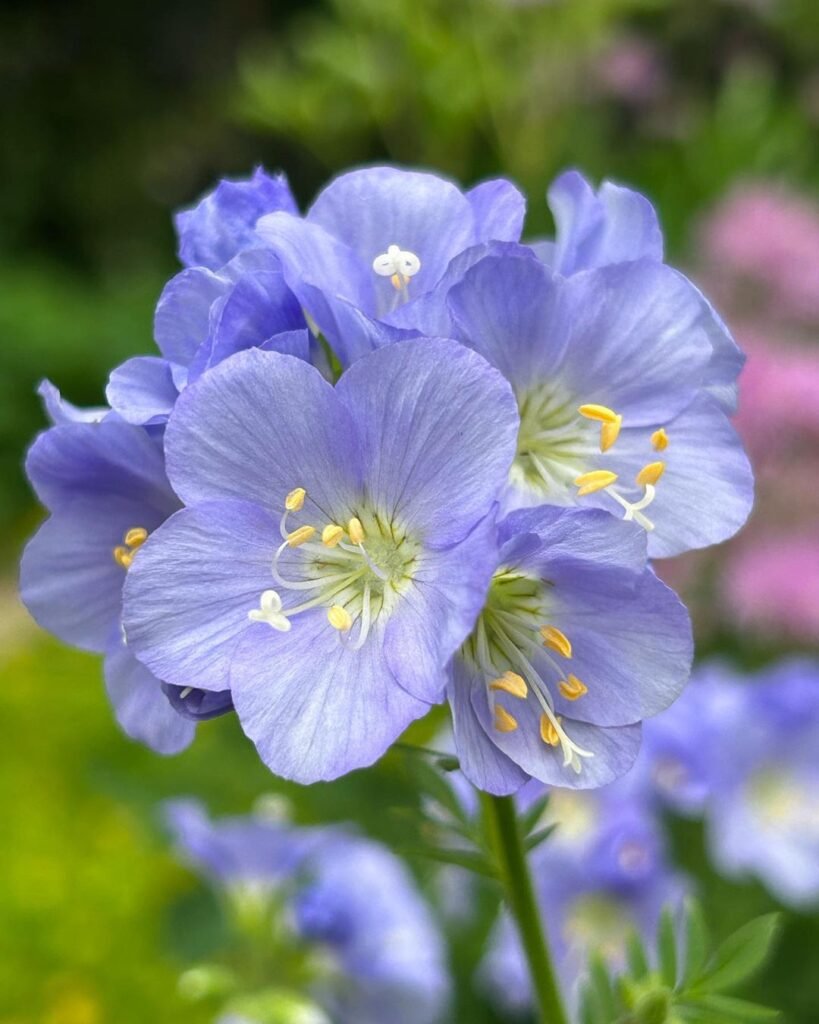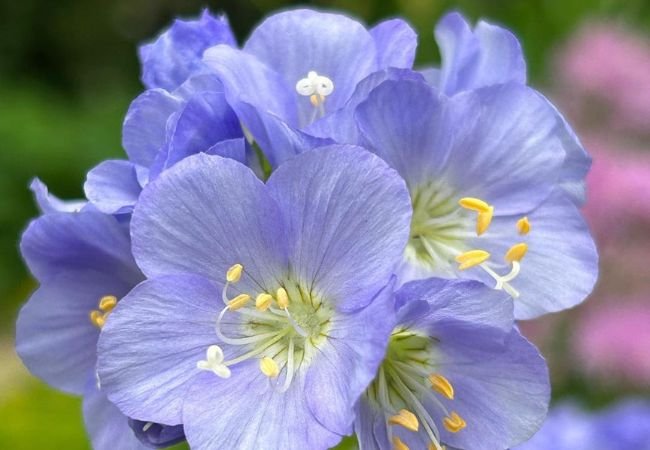Discover Jacob’s ladder flowers: their unique features, growing tips and garden benefits. Learn how to cultivate these charming blue-purple blooms and enhance your garden’s beauty.
Have you heard of Jacob’s ladder flowers? These pretty plants get their name from their leaves, which look like little ladders reaching up to the sky. Let’s explore these charming flowers and learn how to grow them in your garden.
Here’s an information chart for Jacob’s Ladder (Polemonium spp.):
| Category | Information |
|---|---|
| Botanical Name | Polemonium spp. |
| Common Name | Jacob’s Ladder |
| Plant Type | Herbaceous perennial |
| Hardiness Zone | Zones 3-7, depending on species |
| Sun Exposure | Part shade to full shade |
| Soil Type | Moist, well-draining |
| Watering | Moderate |
| Growth Habit | Upright, clumping |
| Height/Spread | 1-3 feet tall, spreads 1-2 feet |
| Special Features | Fern-like foliage, clusters of blue, purple or white flowers in spring to early summer, attracts pollinators, deer resistant |
What Are Jacob’s Ladder Flowers?

Jacob’s ladder (Polemonium) is a group of flowering plants. They’re known for their:
- Ladder-like leaves
- Bell-shaped flowers
- Blue, purple or white blooms
- Height of 1 to 3 feet
Why Are They Called Jacob’s Ladder?
The name comes from the Bible story of Jacob’s dream, where he saw a ladder reaching to heaven. The plant’s leaves look like the rungs of a ladder.
Where Do Jacob’s Ladder Flowers Come From?
These flowers are native to temperate regions of the Northern Hemisphere, including parts of North America and Europe. Many species are found in the wild in the United States.
Growing Jacob’s Ladder
Jacob’s ladder plants are pretty easy to grow. Here’s what they need:
- Sunlight: Partial shade to full sun
- Soil: Rich, moist, well-draining soil
- Water: Regular watering, keeping soil moist but not soggy
- Hardiness zones: 3-8 in the USA
Planting Tips:
- Plant in spring or early fall
- Space plants about 1-2 feet apart
- Add compost to the soil before planting
Caring for Jacob’s Ladder
To keep your Jacob’s ladder plants healthy:
- Water regularly, especially during dry spells
- Add mulch around the plants to keep soil moist and cool
- Fertilize lightly in spring
- Cut back dead foliage in late fall or early spring
Interesting Facts About Jacob’s Ladder
- Medicinal use: Some Native American tribes used the plant for medicinal purposes
- Folklore: In some cultures, the plant was believed to ward off evil spirits
- Variety: There are about 25 different species of Jacob’s ladder
- Pollinators: The flowers attract bees and butterflies
Uses of Jacob’s Ladder in Gardens
Jacob’s ladder plants are versatile in the garden:
- Shade gardens: They do well in partially shaded areas
- Woodland gardens: They fit nicely in natural-looking settings
- Border plants: They make great edging for garden beds
- Cut flowers: They can be used in bouquets
Common Jacob’s Ladder Varieties
- Blue Pearl: Has blue flowers with yellow centers
- Bressingham Purple: Features purple foliage and lavender flowers
- Snow and Sapphires: Has variegated leaves and blue flowers
Jacob’s Ladder and Wildlife
Jacob’s ladder plants are good for wildlife-friendly gardens:
- They attract bees and butterflies
- They provide nectar for pollinators
- They’re generally deer-resistant
Problems and Solutions
While Jacob’s ladder plants are usually easy to grow, they can have some issues:
- Leaf spot: Remove affected leaves and improve air circulation
- Powdery mildew: Avoid overhead watering and ensure good air flow
- Slugs: Use natural slug control methods
Propagating Jacob’s Ladder
You can grow more Jacob’s ladder plants by:
- Dividing mature plants in spring or fall
- Collecting and planting seeds after flowers fade
- Taking stem cuttings in early summer
Companion Plants
Jacob’s ladder looks great with other shade-loving plants like:
- Hostas
- Ferns
- Bleeding hearts
- Columbines
Jacob’s ladder flowers are charming, easy-to-grow plants that can add beauty and interest to your garden. With their unique ladder-like leaves and pretty bell-shaped flowers, they’re sure to be a lovely addition to shady spots in your yard. Why not try growing some this year?
For more gardening tips and plant care guides, visit usagardenhub.com.


1 thought on “Jacobs Ladder Flowers : Elegant Climbers for Your Garden”